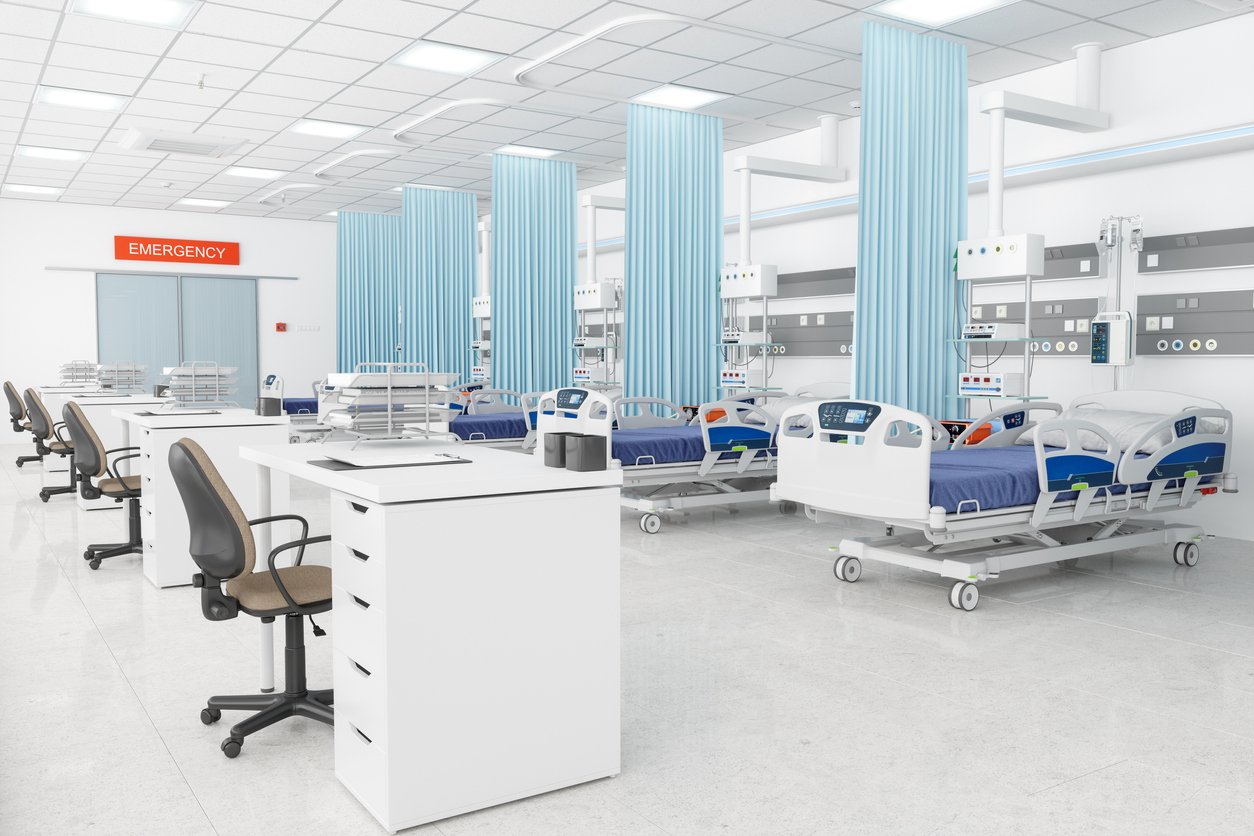The patient room is getting more attention these days, primarily due to the proliferation of Internet enabled technology that brings new opportunities for both patient care and patient engagement. This change also brings new ways of looking at what the patient room needs to provide in this new age of connection.
This shift has huge impact for hospital biomed and IT departments and what is being asked of them. We’ll look at that more closely a bit later. First, let’s get some perspective on what has changed and what it means for patient care.
For much of its history, the focus on patient rooms had more to do with providing an environment that promoted efficiency in patient care, safety, and infection control. IT services were not a primary consideration.
The change in IT needs in the patient room had a slow evolution as technology played an increasing role in patient care. For the most part, equipment and services under the IT purview were ones brought into the room by staff and not housed within it.
The Internet revolution has changed all that. Digital connectivity is transforming society on a personal and business level and this is impacting healthcare as well. While most of hospital technology has been concentrated on patient diagnosis and treatment, the current shift comes from two fronts; digitization and growing consumer orientation towards personal technology.
Coupled with high speed data processing and the ability to move this data more and more efficiently, we have essentially constructed a digital world around our physical world. This has had and continues to have enormous implications over communication and business processes, and that is coming to fruition in the patient room.
Most of this innovation enters the room in a compact package via a laptop or table, which is a good thing since the average patient room is about 300 sq. ft. with not much space to spare. As the digital connection between the hospital staff and patient grows stronger, the means of that connection are taking up residency in the patient room alongside the patient. This is requiring a rethinking of room dynamics, and this rethinking is being particularly felt by biomed and IT services.
Having to position this new equipment to allow for ergonomic and efficient usability requires adept configuration to enhance workflow and provide user comfort and accessibility. As a company that is dedicated to providing quality equipment, logistics, and service to healthcare, CME sees this evolution as something that uniquely involves all three of these aspects and will continue to do so in ever sophisticated ways.
When situating these terminals in the patient room, there are three scenarios to consider: hospital staff use, patient use, and staff-patient interaction via these terminals.
Staff Use
As electronic health records (EHR) become a more prevalent way of documenting information, the use of laptops and tablets becomes more crucial to patient care. Proper placement of this equipment is essential as well. Assessment and documentation needs regarding the patient would notably take place around the patient bed. Logistically, this means providing access to this equipment, allowing for adjustable positioning and adequate storing of the terminals when not in use.
This means having a high a degree of configurable placement and mounting options. Which is why we offer the GCX line of mounting solutions. GCX has more than 45 years’ of global experience creating fully configurable mounting solutions exclusively for the healthcare industry. GCX products are reliable, durable, cleanable, and safe, with a modular design for easy, cost-effective upgrades and adjustable positioning for enhanced workflow and user comfort.
These solutions include both arm mounted, countertop and workstations that are designed to support a range of IT devices—monitor, computer laptop or tablet, mouse, keyboard, and more—so you can incorporate digital health records right at the point of care.
GCX equipment helps ensure your facility’s EHR initiatives won’t disrupt your workflow or take the focus off of patient care allowing for performance of various essential functions while interacting with patients. All GCX hardware can be adjusted in a variety of ways, enabling every medical professional to work comfortably and efficiently while in the patient room.
Patient Use
Patients are now used to interacting with computer devices and there can be no better need for the distraction they provide then during a hospital stay. If your hospital sees incorporating tablets to meet today’s patient experience strategies as vital, the safe and effective integration of the tablet is an essential consideration. GCX offers medical-grade Patient Engagement Tables that includes an adjustable arm to hold a personal or hospital-issued tablet. Patients can then use the devices to stay connected, entertained and informed.
Staff-Patient Interaction
Because of the interactive nature of these devices, it is also important to consider utilization of these devices between hospital staff and the patient. Whether it is showing the patient an image of an x-ray, a video of an anticipated procedure, or using them to schedule follow-up appointments and provide secured patient data, including discharge instructions, these devices will play an increasing role in patient care and providing information. Whether via the patient table, a mobile cart, or an arm supported device, CME can provide customers with the information and assistance they need to make an informed decision.
However your hospital plans to proceed with this new frontier in patient care and EHR documentation, CME and GCX can offer the customized solution for your facility’s unique needs. Contact us at 800.338.2372 or visit our website.
About CME: CME Corp is the nation’s premier source for healthcare equipment, turnkey logistics, and biomedical services, representing 2 million+ products from more than 2,000 manufacturers.
With two corporate offices and 35+ service centers, our mission is to help healthcare facilities nationwide reduce the cost of the equipment they purchase, make their equipment specification, delivery, installation, and maintenance processes more efficient, and help them seamlessly launch, renovate and expand on schedule.



